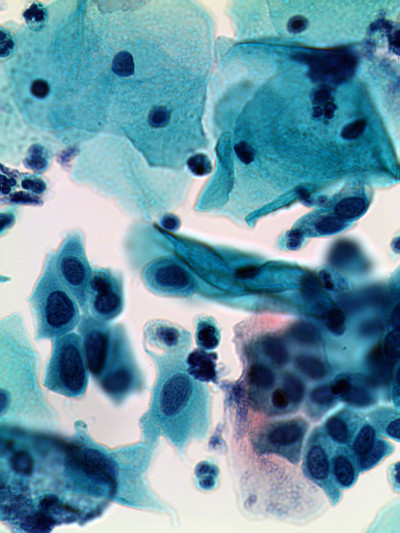Laboratory Services
Myeloproliferative Neoplasms (MPN)
Print this pageUpdated Test Information:
| Test Description |
Myeloproliferative Neoplasms (MPN)
|
|
|---|---|---|
| Synonym(s) |
MPN, Eosinophilia, AML-NOS, CMML |
|
| General Information |
Probes: PDGFRB (5q32), PDGFRA/FIP1L1/CHICK2 (4q12), JAK2 (9p24.1), FGFR1 (8p11.22p11.23) (probe sets may be ordered separately) Disease(s): Myeloproliferative neoplasms (MPN), Lymphoid and myeloid neoplasms with eosinophilia including: Chronic eosinophilic leukemia, eosinophilia, AML-NOS, lymphoblastic lymphoma, CMML, AML with inversion 16 (CBFB) |
|
| Specimen Requirements |
Bone Marrow Aspirate and Peripheral Blood Fixed-cell pellet from cytogenetic analysis slides with metaphase and/or interphase nuclei. (If sending slides please send at least 6 slides for testing) |
|
| Additional Processing Details |
Transport to the testing lab at room temp is acceptable. Do not allow sample to overheat or Freeze. Use cold pack for transport, making sure cold pack is not in direct contact with specimen. |
|
| Required Information |
Complete the Incyte Diagnostics hematology requisition with the patient's demographics and relevant clinical history. Label the specimen containers with patient's full name, second unique identifier, and specimen site/source. Please provide a copy of the patient's complete blood count (CBC) report. |
|
| Unacceptable Specimen Conditions |
Specimen containers without two (2) patient identifiers, specimens submitted in inappropriate collection media, frozen specimens. |
|
| Department (code) |
FISH |
|
| Methodology |
Fluorescence in-Situ Hybridization (FISH) |
|
| Estimated TAT |
3-5 working days from receipt |
|
| Testing Schedule |
Monday-Friday |
|
| Retention |
Monday-Friday |
|
| CPT Code(s) |
88377x4 manual |
|
| Additional Information |
Clinical Significance: The MPN FISH panel is used to aid in the diagnosis of myeloid and lymphoid neoplasms with eosinophilia and prediction of therapeutic response. The clinical and morphologic features of these diseases can overlap, but each mutation has a characteristic presentation. FIP1L1-PDGFRA rearrangement is generally found in CEL, but the presentation can be as AML, T-lymphoblastic lymphoma, or both simultaneously. Rearrangement is usually cryptic by routine cytogenetics. Myeloid neoplasms with PDGFRB usually present as chronic myelomonocytic leukemia, but may also present as atypical chronic myeloid leukemia (aCML), CEL, MPN with eosinophilia, AML and juvenile myelomonocytic leukemia (JMML). Myeloid and lymphoid neoplasms with FGFR1 are generally aggressive and may present as MPN, AML, T- or B-LBL/ALL, or mixed phenotype acute leukemia. PDGFRA and PDGFRB mutations predict responsiveness to tyrosine kinase inhibitors, but MPN with FGFR1 rearrangement do not respond to imatinib and there is no currently established TKI therapy, although some promising new therapies have been reported. AML with inversion 16 may present with less than 20% blasts and can be a subtle abnormality by conventional cytogenetics, so confirmation with FISH is recommended. If Flow Cytometry studies are also being ordered, it is preferable to submit an EDTA (purple top) tube specifically for Flow Cytometry. If only one tube can be submitted, please submit one sodium heparin (green top) tube for both FISH and Flow Cytometry studies. |
